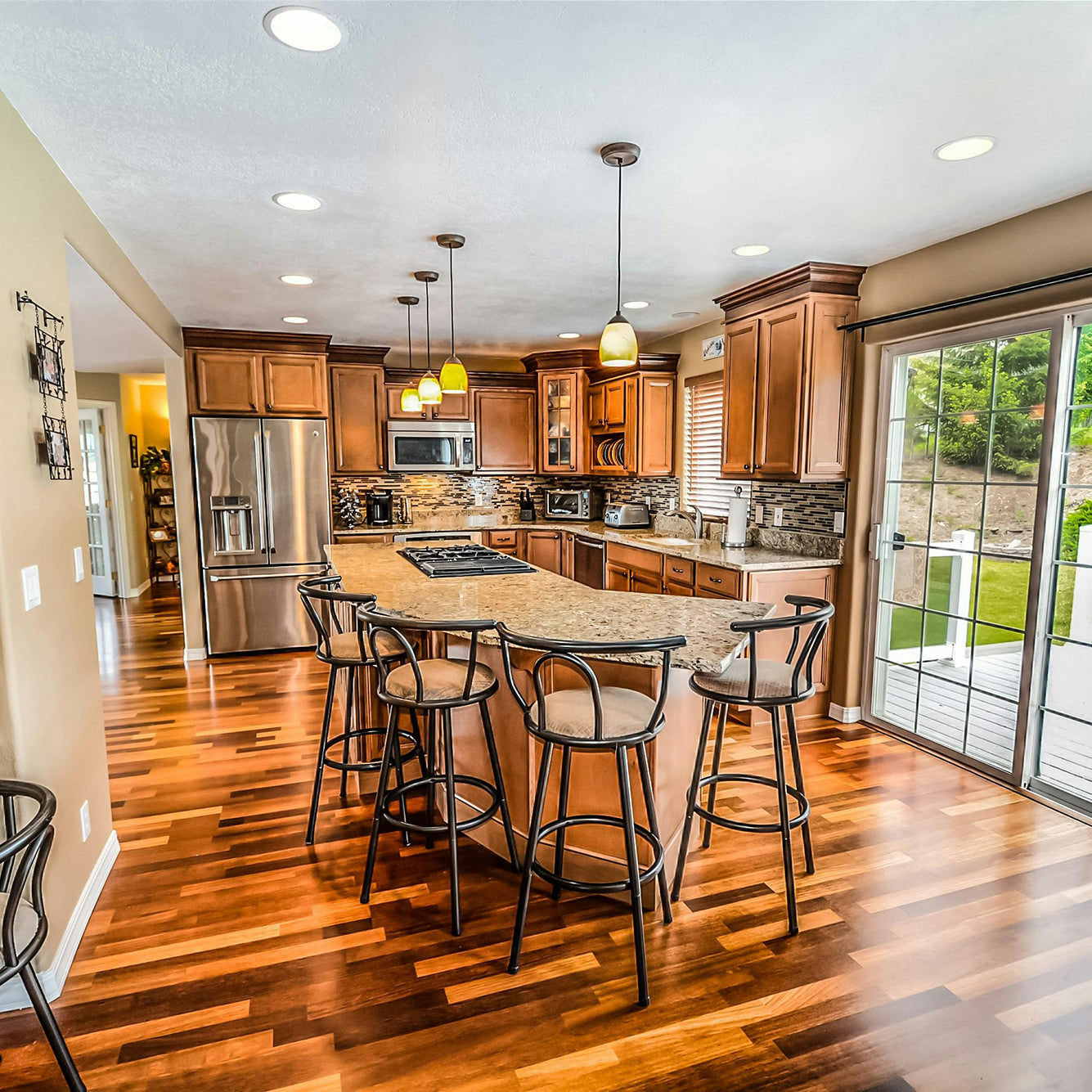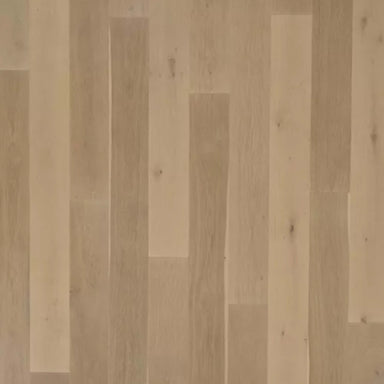
EASY, CONCISE KNOWLEDGE ABOUT HARDWOOD CONSTRUCTION
That’s important information because these are the materials you’ll be living with and walking on for years to come should you choose this flooring product. Knowing the different types that make up various hardwood floors also helps you understand and evaluate their performance aspects: why certain hardwoods are easier to install, why some wear better, longer, and why others are easier to replace.
Plus, perhaps most important, understanding hardwood construction and materials can make you a smarter shopper, help you better determine hardwood flooring value and keep you within the parameters of your budget.
UNDERSTANDING HARDWOOD SIZES, SPECIES AND TYPES
When we think of solid wood floors we generally are talking about a 3/4" thick plank that is 2 1/4" wide. This is the classic strip wood floor, although it is possible to find a narrower width or a slightly thinner gage. The strips are generally in random lengths from 12" – 84". The most common wood species used for solid strip floors are red oak, white oak, maple, cherry, white ash, hickory or pecan. And the three common types of wood floors are Solid, Engineered and Longstrip Plank.
TYPE 1: THINK SOLID AND EXPANSIVE
Solid wood floors are one solid piece of wood that have tongue and groove sides. When we talk about solid wood floors, we tend to think of floors that are unfinished, but it’s important to know that there are also many pre-finished 3/4” solid wood floors. And you should also be aware of the moisture factor. Solid wood floors are sensitive to moisture and because so they are used in nail down installations and are not recommended for installation below ground level, or directly over a concrete slab. The good news is that these floors can be refinished, or recoated, several times, which adds to their appeal and to their long life in your home. In fact, there are solid floors that are over 100 years old that are still in good condition with rich patina and character – enhancing the beauty of the home.
Because they’re a natural product, hardwood flooring will expand and contract in response to seasonal changes in moisture. In the winter heating months, moisture leaves the wood causing the floor to contract, which creates small gaps between each plank. In the summer months, when the humidity is higher, the wood will expand and the gaps will disappear. If there is too much moisture it may cause the wood planks to cup, or buckle. Not something you want in your home. This is why it is important when installing a solid strip floor to leave the proper expansion area around the perimeter and to acclimate the wood prior to installation. This will help assure a lasting, beautiful application.
KNOW THAT OAK IS A WOOD OF CHOICES
Oak is commonly used for solid unfinished wood floors and there are several different qualities of oak for you to choose from. These qualities are clear, select and better, #1 common, and #2 common. The clear has no visual blemishes or knots and is extremely expensive. While the select and better quality has some small knots and very little dark graining.
The #1 common and #2 common have more knots and more dark graining. So be aware of that when buying an unfinished solid oak floor and make sure you know which quality of wood you are buying.
TYPE 2: THE EFFICIENT, ENGINEERED SOLUTION
Most engineered floors can be nailed down, stapled down, glued down, or floated over a wide variety of subfloors, including some types of existing flooring. Engineered floors will range from 1/4" to 9/16" in thickness, and vary from 2 1/4" to 7" in width. The widths can also be mixed, such as 3-5-7-inch planks installed side by side. By varying the board widths you can change the total appearance of the floor. Create a truly custom look for your home. The lengths will be random and range from 12" – 60" in length.
FOR FLEXIBILITY, ENGINEERED IS TOP-NOTCH
Because engineered wood floors are made up of several layers of wood the top finish layer can be a totally different wood species. A variety of domestic or exotic hardwood species are available such as Oak, Maple, Hickory or Cherry.
TYPE 3: THE EASY-TO-REPLACE LONGSTRIP
Longstrip planks are approximately 86" in length and 7 1/2" in width. They generally have between 17 and 35 pieces that make up the top layer of each board. This gives the effect of installing a board that is 3 rows wide and several planks long. Each longstrip plank looks like an entire section that has already been pre-assembled for you. This alone can create a unique look all your own. Longstrip planks are designed for the floating installation, but most can also be glued-down, or stapled down. Because these floors can be floated they are extremely versatile – they can go over a wide variety of subfloors and on any grade level.
Like engineered floors, longstrip floors come in a wide variety of domestic and exotic hardwood species. Longstrip plank floors have another advantage. When damaged, they are easy to replace. That can be an important consideration for active homes.
THOSE ARE THE INS AND OUTS OF HARDWOOD CONSTRUCTION
We hope this knowledge makes you a smarter shopper, helps you narrow down your options, or even solidifies your choice of hardwood flooring for your home.





